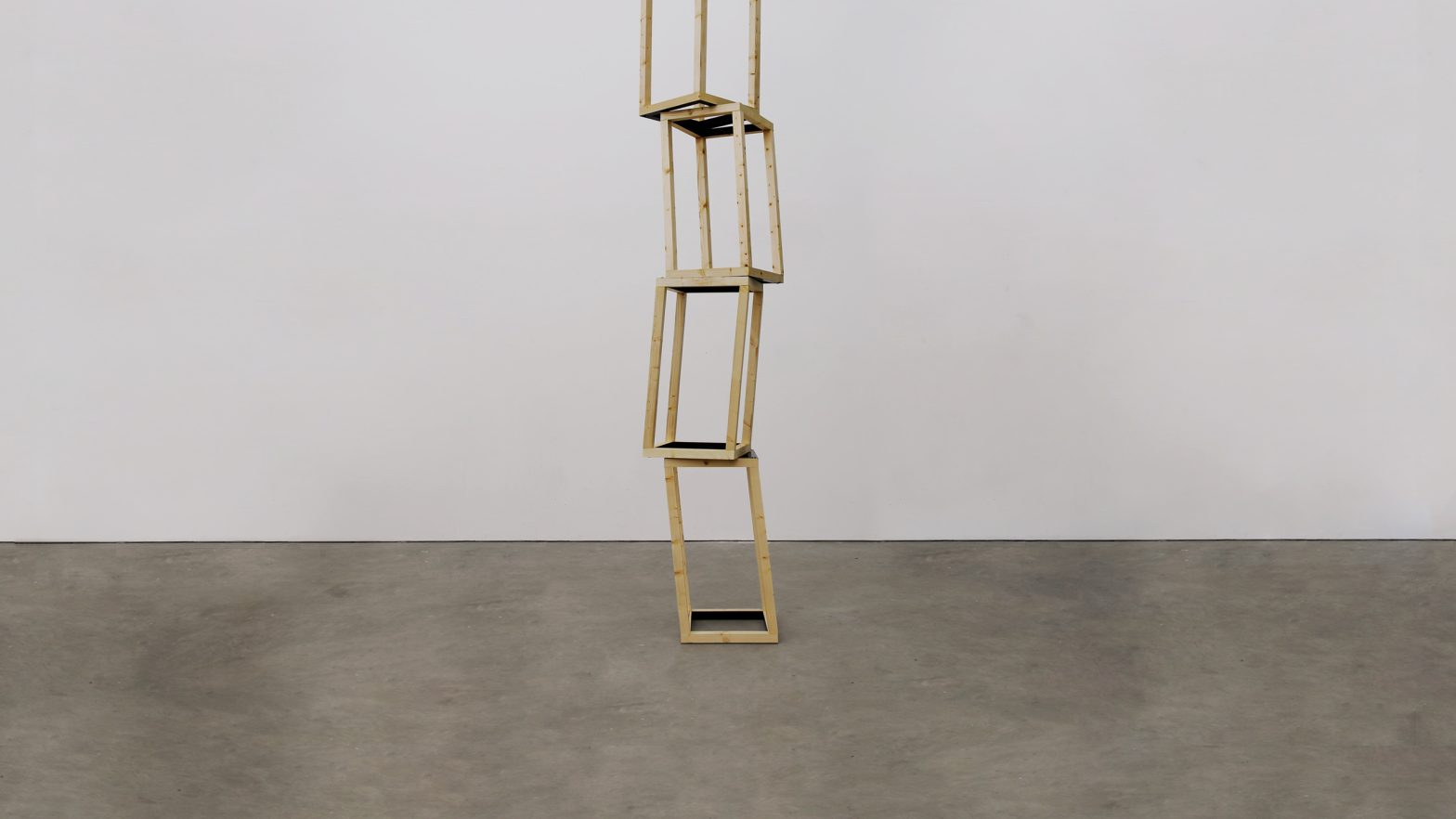Nathan Caldecott from the Ruskin School of Art at the University of Oxford is exhibiting his work at Modern Art Oxford as part of the Platform Graduate Award 2017. Below he talks about his work and the inspiration behind it.
My practice as an artist has a focus on digital models, and the statehood they adopt in digital and physical spaces. The work I’ve been making over the last 2 years is a redirected form of minimalist sculpture, acting as diagrams and stations for these models, while using objects of value to intercept their visual systems. Engaging with architecture, finance, and social theory, I render these models into minimal systems of grids and cubes, affording a conversation between the newly empowered and embedded sense of construction in these larger systems, and the detachment of their complexity and scale.
The threshold this opens up continues into my process, which sends back and forth from laptop to workshop. In my work, it creates a distinct distance between the role of the cube or grid as a structural unit, and the role it could play as a physical container of value. With my digital images, I prototype shapes and formations on the computer alone, their containership limited to source images compressed into small pixel grids, their unit value then enlarged into more unique sets. For my sculptures, this distance is more visible and separate, and allows me to push apart digitised incidents of form, and the material incidents of surface that I apply to them.
The centrepiece of my exhibition at Platform – a set of 6 kiltered cubes – references modes of conduction, carrying an unused 12-bit binary encryption into its structure, while being loaded with a mix of mythical, material and dematerial surfaces, including diamonds and carbon nanotubes. It’s joined by a floor installation of the first BlackBerry mobile cameraphones, that were joined in an encrypted network before being shredded and laid in a large grid. Completing the room is a GIF misusing the algorithm Photoshop uses to compress moving images, translating a set of identical rotated gradients into different tonal patterns. The GIF is displayed as a set of 4 Giclee prints.
I’m very excited to see how the pieces in Render Stations – all coming from different lines of enquiry – form a suite of work, and how they play out in a public setting alongside the Aleksandra Mir and Rose Finn-Kelcey shows upstairs. I’m especially grateful to the team at Modern Art Oxford and the Ruskin for the opportunity.
